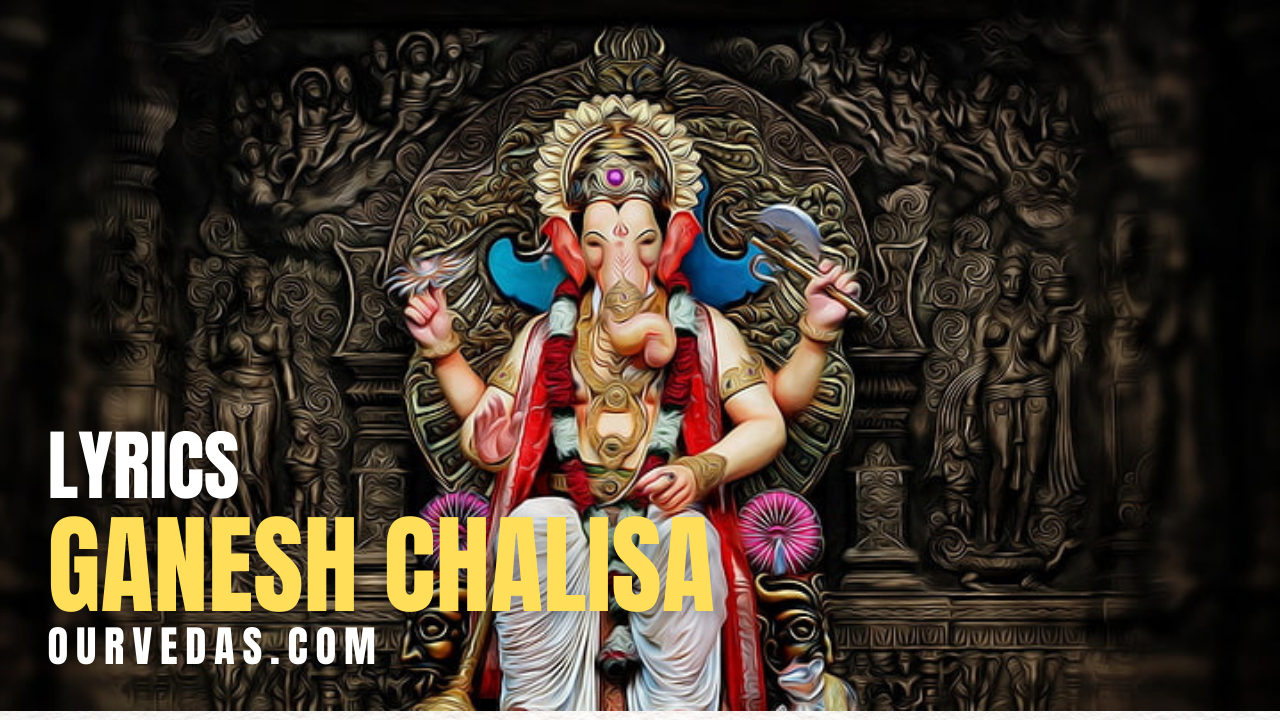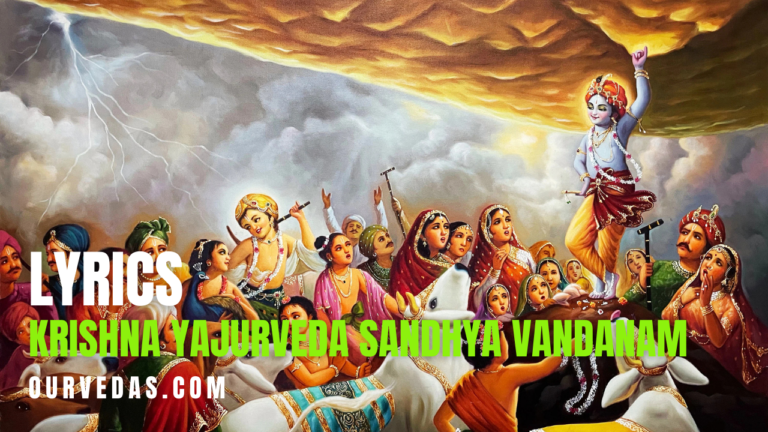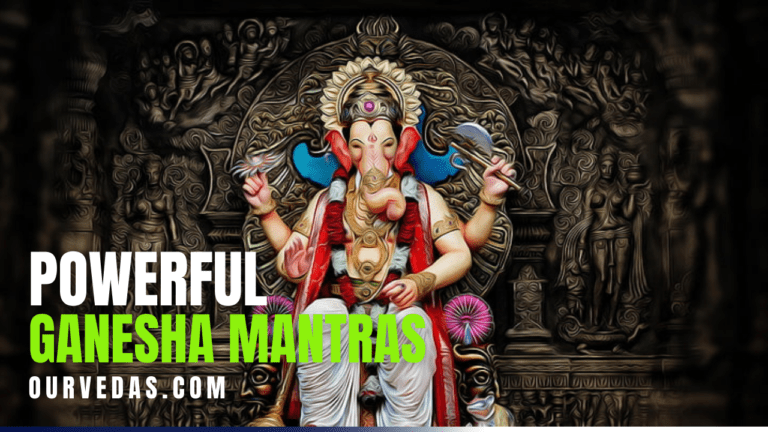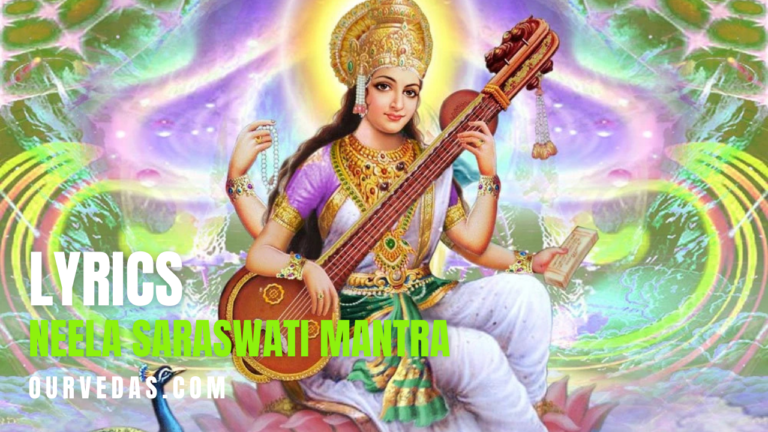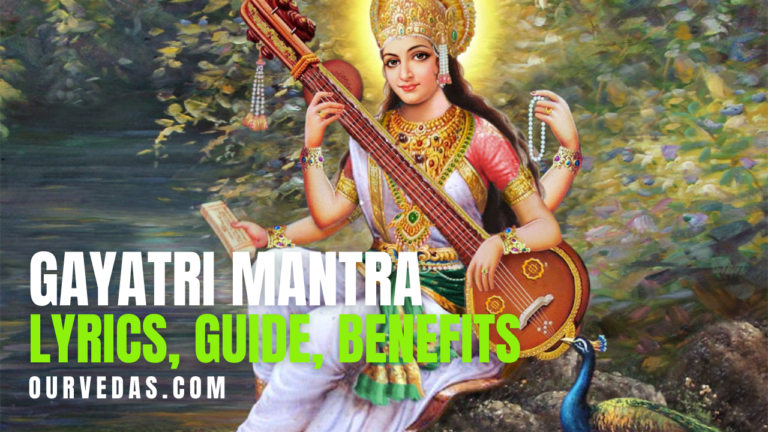The Ganesh Chalisa is a devotional hymn in honor of Lord Ganesha, an elephant-headed deity who is considered the remover of obstacles, the god of wisdom, intellect, and good fortune. Composed by the poet-saint Goswami Tulsidas in the 16th century, the Chalisa is a set of 40 verses, for chalisa is “40” in Hindi, which extols Lord Ganesha’s virtues, attributes, and divine qualities.
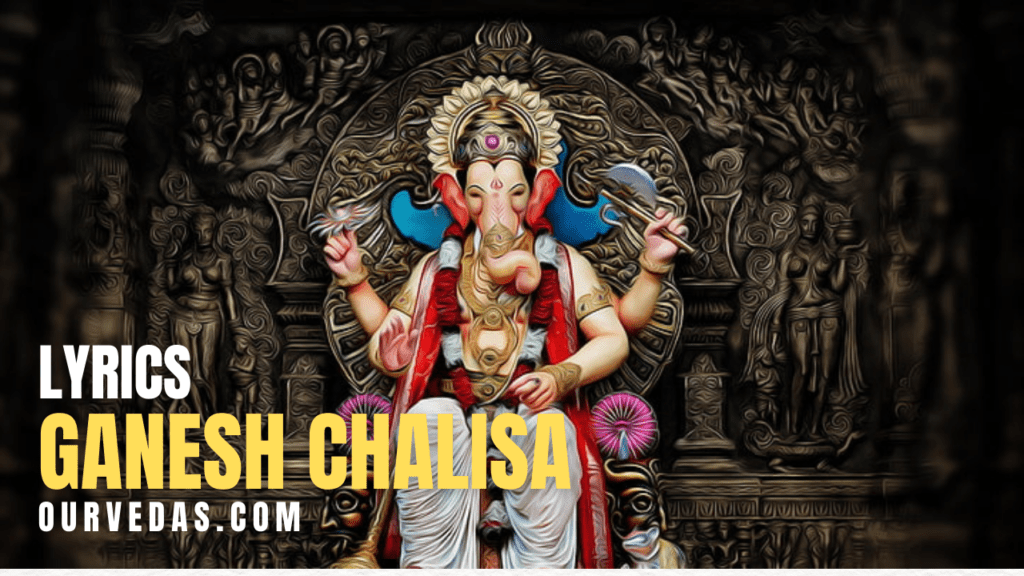
Shri Ganesh Chalisa Lyrics
History of Ganesh Chalisa
This hymn is authored by a 16th-century poet-saint named Goswami Tulsidas. Tulsidas was known for his very strong devotion to Lord Rama, but he showed high regard for Ganesha as he realized the importance of Ganesha in Hindu rituals and spiritual practices.
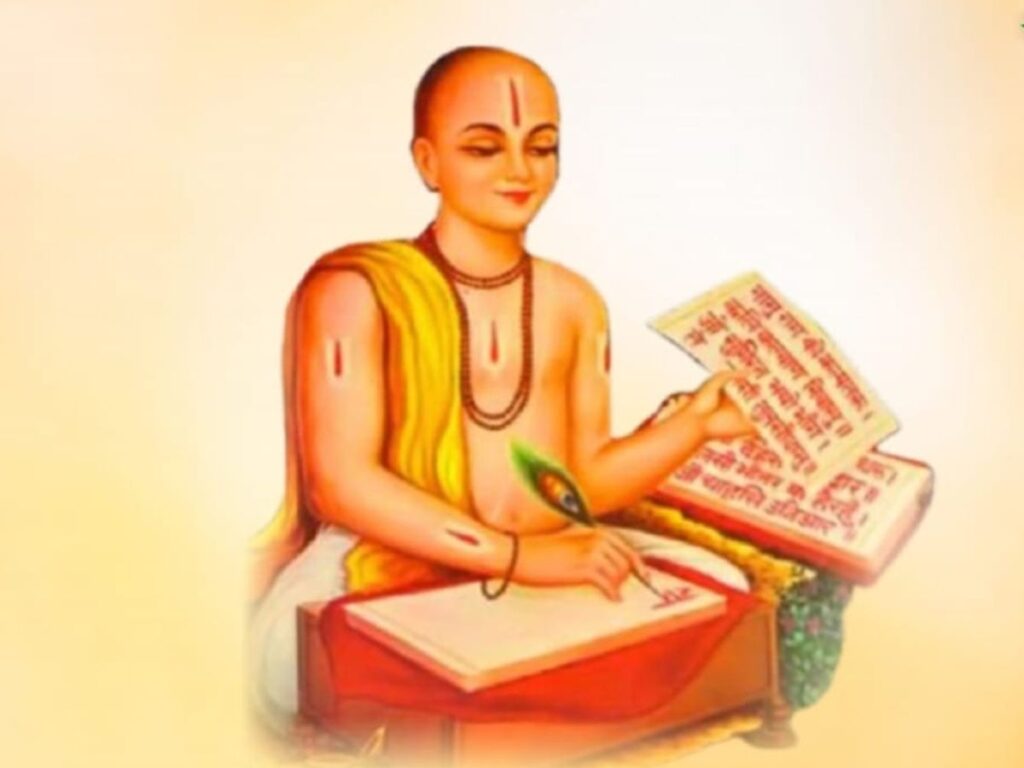
The word “Chalisa” means forty in Hindi and consists of 40 verses describing the virtues and attributes of Lord Ganesha. The writer Tulsidas describes through his verses, stories about the birth of Ganesha, his divine quality, and miraculous events related to Ganesha.
The Ganesh Chalisa has become part of Indian culture and has influenced art, music, literature, and even modern media. Recently, the Ganesh Chalisa has triggered an influx of various interpretations and adaptations through different types of musical genres for bhajans, devotional songs, and even fusion music. With the presence of the hymn, generations can now bask in the love, devotion, and perseverance that reigned during the olden days but seamlessly harmonize values with new lifestyles.
Lyrics of Ganesh Chalisa
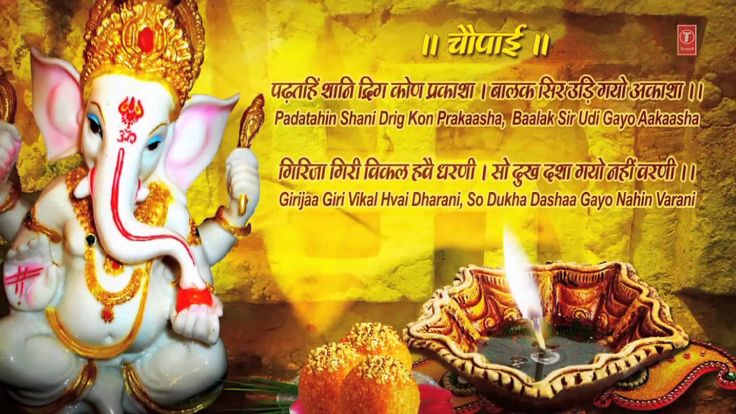
।। Doha ।।
Jaya ganapati sadhguna sadana। kavi vara badana kripaala ।
Vighna harana mangala karana। jaya jaya girijaa laala ॥
।। Chaupai ।।
Jaya jaya ganapati gan raaju । mangala bharana karana shubha kaaju ॥
Jaya gajabadana sadana sukhadaataa । vishva vinaayaka buddhi vidhaata ॥
Vakra tunda shuchi shunda suhaavana । tilaka tripunda bhaala mana bhaavana ॥
Raajata mani muktana ura maala । svarna mukuta shira nayana vishaala ॥
Pustaka paani kuthaara trishuulam । modaka bhoga sugandhita phoolam ॥
Sundara piitaambara tana saajita । charana paaduka muni mana raajita ॥
Dhani shiva suvana shadaanana bhraata । gaurii lalana vishva-vidhaata ॥
Riddhi siddhi tava chanvara sudhaare । mushaka vaahana sohata dvaare ॥
Kahaun janma shubha kathaa tumhaari । ati shuchi paavana mangala kaari ॥
Eka samaya giriraaj kumaari । putra hetu tapa kinha bhaari ॥
Bhayo yagya jaba puurna anuupa । taba pahunchyo tuma dhari dvija ruupa ॥
Atithi jaani kai gauri sukhaari । bahuvidhi sevaa kari tumhaari ॥
Ati prasanna hvai tuma vara diinha । maatu putra hita jo tapa kiinha ॥
Milahi putra tuhi buddhi vishaala । binaa garbha dhaarana yahi kaala ॥
Gananaayaka, guna gyaana nidhaana । puujita prathama ruupa bhagavana ॥
Asa kahi antardhyaana ruupa hvai । palana para baalaka svaruupa hvai ॥
Bani shishu rudana jabahi tuma thaana । lakhi mukha sukha nahin gauri samaan ॥
Sakala magana, sukha mangala gaavahin । nabha te surana sumana varshaavahin ॥
Shambhu uma, bahu dana lutavahin । sura munijana, suta dekhana aavahin ॥
Lakhi ati aananda mangala saaja । dekhana bhi aaye shani raaja ॥
Nija avaguna guni shani mana maahin । baalaka, dekhan chaahata naahin ॥
Giraja kachhu mana bheda badhaayo । utsava mora na shani tuhi bhaayo ॥
Kahana lage shani, mana sakuchaai । kaa karihau, shishu mohi dikhaai ॥
Nahin vishvaasa, uma ur bhayau, shani so baalaka dekhana kahyau ॥
Padatahin, shani driga kona prakaasha । baalaka shira udi gayo aakaasha ॥
Giraja giriin vikala hvai dharani । so dukha dasha gayo nahin varani ॥
Haahaakaara machyo kailaasha । shani kiinhyon lakhi suta ka naasha ॥
Turata garuda chadhi Vishnu sidhaaye । kaati chakra so gaja shira laaye ॥
Baalaka ke dhada upara dhaarayo । praana, mantra padha shankara darayo ॥
Naama ‘ganesha’ shambhu taba kiinhe। prathama puujya buddhi nidhi, vara diinhe ॥
Buddhi pariiksha jaba shiva kiinha । prithvii kar pradakshina liinha ॥
Chale shadaanana, bharami bhulaIi । rachi baitha tuma buddhi upaai ॥
Charana maatu-pitu ke dhara linhen । tinake saata pradakshina kinhen ॥
Dhani ganesha, kahi shiva hiya harashe । nabha te surana sumana bahu barase॥
Tumhari mahima buddhi badaye । shesha sahasa mukha sakai na gaai ॥
Mein mati hina malina dukhaari । karahun kauna vidhi vinaya tumhaari ॥
Bhajata ‘raamasundara’ prabhudaasa । lakha prayaga, kakara, durvasa ॥
Aba prabhu daya dina para kijai । apani bhakti shakti kuchhu dijai ॥
।। Doha ।।
Shri Ganesh yah chalisa, path karai dhari dhyan ।
Nit nav mangal gruha bashe, lahi jagat sanman ॥
Sambandh apne sahstra dash, rushi panchami dinesh ।
Puran chalisa bhayo, mangal murti ganesha ॥
How to PDF download Ganesh Chalisa?
On this page, you may use keyboard shortcut Ctrl+P. You may save this page as PDF.
The Importance of Lord Ganesha
Understanding how important Ganesha is in Hinduism before proceeding with the Ganesh Chalisa is crucial. In Hinduism, Ganesha is considered the harbinger of good fortune and the remover of obstacles at the beginning of rituals and ceremonies. You will often discover images of Ganesha at the entrance of homes and businesses as a symbol of auspicious beginnings. Ganesha represents the essence of intellect and wisdom, guiding devotees toward clarity and insight. The tales around his birth and the imagery around his persona have moralistic messages for those seeking greatness and family morals.
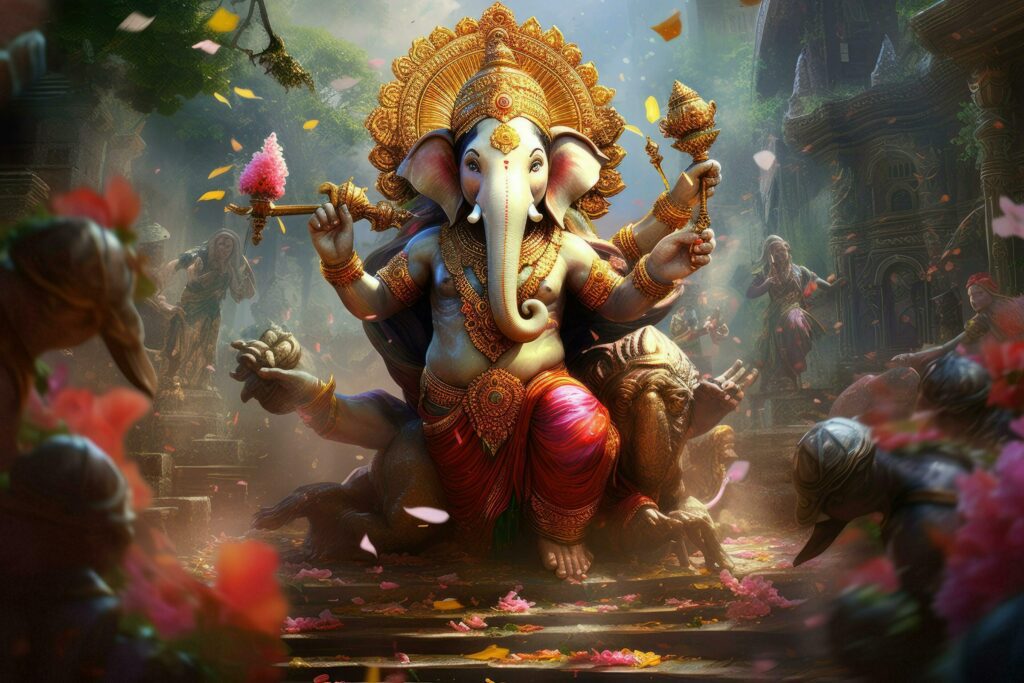
Formulation and Contents of Ganesh Chalisa
The Ganesh Chalisa comprises 40 verses praising all those attributes and legends associated with the good deeds done by Ganesha. A prayer was thus doubled, where each verse worked as an offering and a reminder for a devotee about what virtues a person must exhibit.
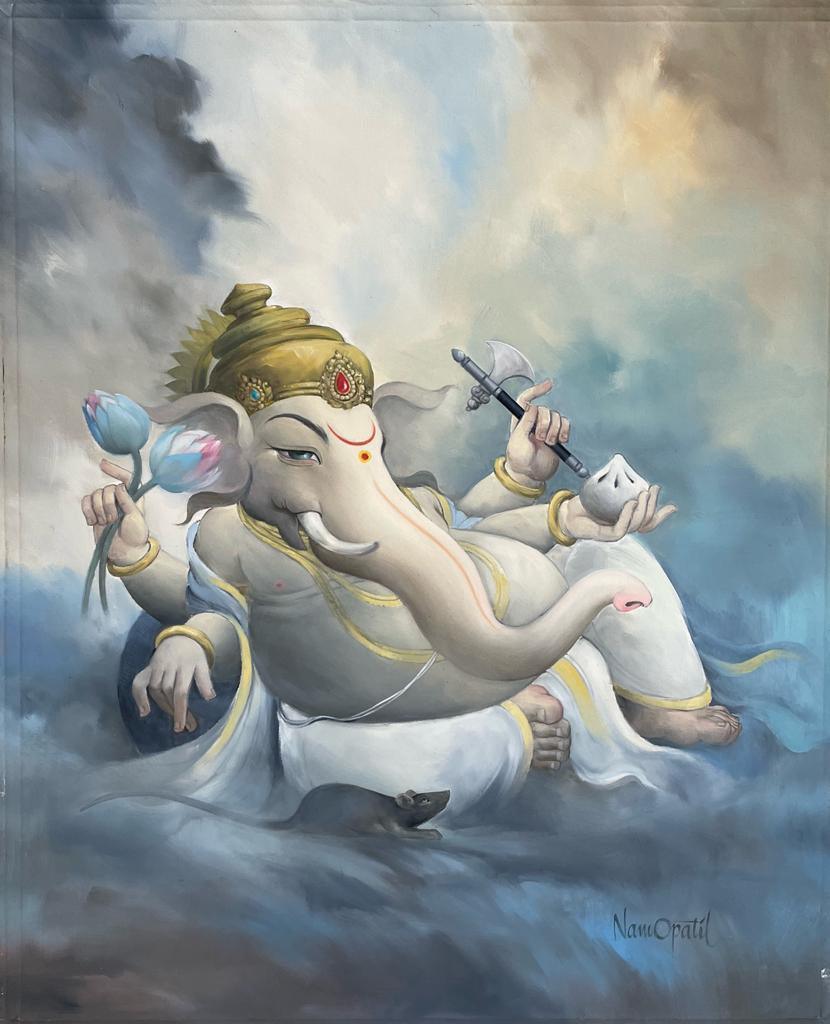
In the first few paragraphs of the hymn, an invocation to the divine establishes a connection between the devotee and Ganesha. In the following hymns, there is a description of his physical form, outlining the distinct features like an elephant head and large belly. As one moves on to the next verses, one will discover themes of his divine powers and wisdom.
The verses also narrate the stories of Lord Ganesha’s life, including his birth and the incident related to Lord Shiva’s Beheading and rebirth with the head of an elephant. Such stories become a metaphor for overcoming challenges in life and resilience and adaptability.
Recitation and Benefits
Recitation of the Ganesh Chalisa is supposed to bring forth the divine interference of Lord Ganesha. Devotees read it daily, especially on Wednesdays and during festivals like Ganesh Chaturthi.
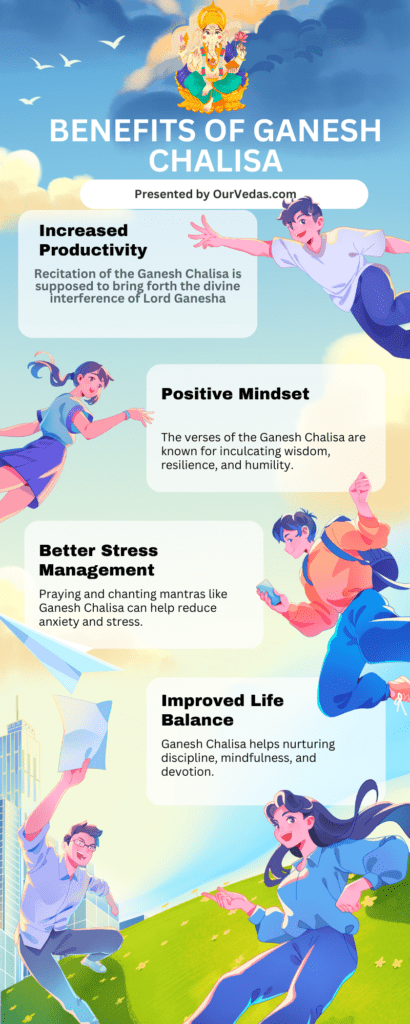
Reciting the Ganesh Chalisa is not just a spiritual practice, but also a means of nurturing discipline, mindfulness, and devotion. Many devotees describe a feeling of being calm and clear-minded, better equipped to tackle life’s challenges after recitation.
How is Ganesh Chalisa different from Ganesh Vandana?
The Ganesh Chalisa and Ganesh Vandana are two distinct devotional texts dedicated to Lord Ganesha. They differ in structure, content, and purpose, each serving a unique role in Hindu devotional practices.
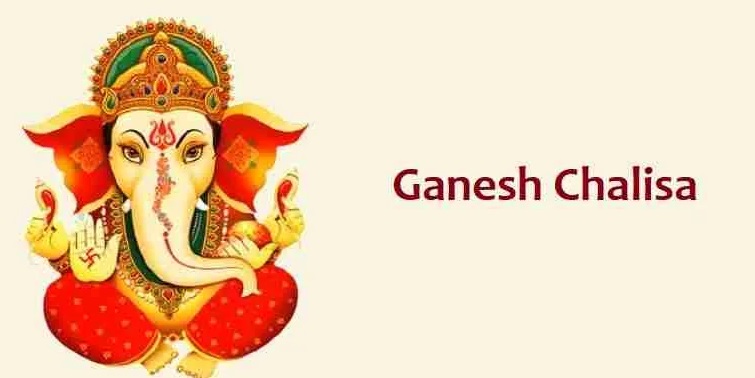
The Ganesh Chalisa consists of 40 verses (Chalisa meaning ‘forty’ in Hindi) that praise Lord Ganesha, highlighting his attributes, stories, and the significance of worshipping him. On the other hand, Ganesh Vandana generally means shorter prayers or hymns that may or may not have a specified number of verses. They are often simpler in structure and can be more direct in invoking Ganesha.
The Ganesh Chalisa presents more about his characteristics, eliminating all the obstacles and importance in various other areas of one’s life. The stories he is woven out of and then the deeper philosophy are interplayed. Ganesha Vandana is a prayer of invocation and benediction said in praise, usually before a ceremony or a task starts.
It is essentially considered a means of seeking greater spiritual insight and blessings in lieu. It is more detailed literature for devotional activities. Ganesh Vandana is generally recited on particular occasions or as a part of some ceremonies by which immediate blessings or relief from adversity can be sought.
Why we recite Ganesh Chalisa before the beginning of important events?
The Ganesh Chalisa is recited before important events start for several significant reasons.
- Invocation of Blessings: Lord Ganesha was given a boon that would enable him to remove all the obstacles in the lives of those who worship him before beginning new events. By reciting the Ganesh Chalisa, devotees seek his blessings to ensure a smooth beginning and successful completion of any undertaking.
- Positive Mindset: The verses of the Ganesh Chalisa are known for inculcating wisdom, resilience, and humility. These verses promoted this kind of positive mindset among followers and encouraged them to embody these virtues when facing challenges.
- Psychological Benefits: Praying and chanting mantras like Ganesh Chalisa can help reduce anxiety and stress. This develops peace and reassurance in the hearts of the practitioners.
Conclusion
The Ganesh Chalisa is a beautiful example of the rich spiritual heritage of Hinduism. It motivates us to pursue a spiritual journey. With the teachings of the Ganesh Chalisa, we can gather the strength to face life’s challenges.
The verses of Ganesh Chalisa echo in the hearts of millions of devotees worldwide. The Ganesh Chalisa remains a powerful reminder of the enduring bond between humanity and our beloved Ganesha.
FAQs
Who is Lord Ganesha?
Lord Ganesha is a very popular elephant-headed god of Hinduism who symbolizes the storehouse of wisdom, prosperity, and removal of obstacles. He is often worshiped before new ventures are initiated and regarded as a god of good fortune and success. Ganesha is the son of Lord Shiva and Goddess Parvati. He is shown holding many objects in his hand, such as a modak, which implies spiritual knowledge, and the broken tusk, which symbolizes sacrifice. His large ears indicate the importance of listening, and his trunk symbolizes adaptability. Devotees recite prayers and mantras to invoke his blessings, especially during important events and festivals like Ganesh Chaturthi, celebrating his birth and presence.
How was Ganesha born?
The birth of Lord Ganesha is surrounded by fascinating mythology. According to Hindu scriptures, he was created by Goddess Parvati, the consort of Lord Shiva. One day, while bathing, Parvati desired a guardian to protect her privacy. She fashioned Ganesha from the turmeric paste she used for her bath and breathed life into him, making him her son.
When Lord Shiva returned home, Ganesha stood guard and refused to let Shiva enter, not knowing who his father was. This made Shiva angry, and he challenged Ganesha. In a fit of rage, he beheaded Ganesha. Realizing his mistake, Shiva wanted to bring Ganesha back to life and asked his followers to find the head of the first creature they encountered, an elephant.
Who was Tulsidas?
Tulsidas was a famous Indian poet-saint and philosopher, prominently known for his devotion to Shri Lord Rama. Saint Tulsidas was born in the 16th century in present-day Uttar Pradesh. But he is celebrated to this day across India. He is celebrated for his literary contributions, particularly the epic poem “Ramcharitmanas,” which retells the story of the Ramayana in a more accessible and lyrical form. Tulsidas emphasized the importance of bhakti (devotion) and righteousness in life, and his works have profoundly influenced Hindu spirituality and culture.
He also made other famous devotional hymns like “Hanuman Chalisa,” which sings the praise of Lord Hanuman, the most ardent devotee of Lord Rama. His unshakable faith characterized Tulsidas’s life, and he is considered one of the greatest saints in the Hindu tradition. His teachings inspire millions of devotees throughout India and other parts of the world.
What are some famous prayers dedicated to Lord Ganesha?
Devotees recite many famous mantras of Lord Ganesha to seek his blessings, wisdom, and obstacle removal. Some of the best-known prayers include:
- Ganesh Mantra (Om Gan Ganapataye Namah): This powerful mantra is often recited during prayers and rituals to invoke Ganesha’s presence.
- Ganapati Bappa Morya: This is a popular chant, mainly on Ganesh Chaturthi, expressing devotion and urging Ganesha to bless the devotee.
- Ganesha Stotra (Vakratunda Mahakaya): This is a hymn to praise the qualities of Ganesha and seek his protection and guidance.
- Ganesha Ashtakshara Mantra: A sacred eight-syllable mantra believed to bring success and remove obstacles.
- Ganesh Chalisa: A 40-verse prayer elaborates on Ganesha’s attributes and stories, expressing devotion and seeking his blessings for prosperity and success.
These prayers are integral to worship and are chanted during various religious occasions, ceremonies, and personal prayers.
What is the best time to read Ganesh Chalisa?
Ganesh Chalisa can be recited anytime, but some periods are particularly auspicious. Those periods are discussed below:

- Ganesh Chaturthi: This is a festival marking the birth of Lord Ganesha. The most favorable time to read Ganesh Chalisa is during this festival. Devotees often chant it daily during the festival.
- Every Wednesday: Most devotees believe that reciting the Ganesh Chalisa on Wednesdays brings prosperity and hurdles away since Wednesday is revered as the day associated with Ganesha.
- At the Beginning of New Ventures: Generally, it is done to seek Ganesha’s blessings at the beginning of new projects or important life changes since recitation of the Chalisa is believed to rid new endeavors of obstacles and difficulties.
- In Times of Trouble or Need: When facing difficulties or challenges, reciting the Ganesh Chalisa can provide comfort and help overcome obstacles.
- Morning or Evening: Many devotees prefer to recite the Chalisa in the early morning or evening when the atmosphere is calm and more conducive to prayer and meditation.
Ultimately, the time varies with a person’s desire and belief; however, devotion, regularity, and attentiveness of mind in reciting Ganesh Chalisa are necessary.

